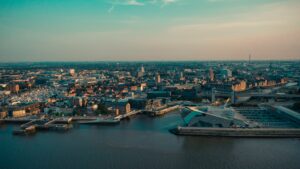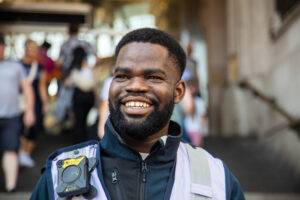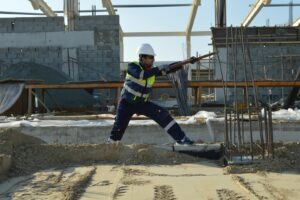A new movement is gaining momentum across England which is turning public services inside out. At its heart is the assumption that services need to become more innovative if they are to achieve the outcomes that people need. Arts and cultural organisations are shining a new light on some of the most intractable issues facing local authorities and the NHS.
The Cultural Commissioning Programme is a three-year initiative funded by Arts Council and delivered by a partnership of NCVO, the New Economics Foundation (NEF) and New Philanthropy Capital. It is working with arts and cultural sector commissioners and policymakers to strengthen commissioning of arts and culture, and to deliver better outcomes for people and communities.
As part of this programme, NEF is working with two pilot sites that are testing new ways of commissioning arts and culture in Gloucestershire and Kent. Commissioners in the pilot sites have been pushing the boundaries of public services by integrating new and creative methods into traditional services designed to tackle a host of challenges, from mental ill health to dementia.
In Kent, for example, a tender is currently under way which is re-commissioning a range of community-based mental health services, using a competitive dialogue approach that gives commissioners an opportunity to negotiate and discuss provider’s visions of the service as the tendering process is underway. Commissioners have set the expectation that arts and cultural organisations are central partners in delivering the mental health offer. To make this a reality, important changes have been made to the provider engagement process (where arts and cultural organisations formed 20% of the attendees at the main market engagement event) and to the tendering process, where procurement documents have been changed to support the involvement of arts and culture.
In Gloucestershire, the clinical commissioning group has approved a grant fund for pilot schemes run by arts and cultural organisations. This is designed to generate innovative solutions to some of the needs facing the local population that established health interventions are struggling to meet.
In both pilot sites, commissioners are changing the process and culture of commissioning to create the space for arts and culture to thrive as part of a diverse range of responses to local needs and aspirations. Here, we set out eight things we’ve learnt so far about how to make this happen in practice.
- Think design – and delivery: arts and cultural organisations have a track record of engaging with public services in a range of ways. Some are focussed on delivering a range of social outcomes, such as improved mental health, but others are involved in helping commissioners engage the public in designing new services, or raising awareness of important social issues – such as running a campaign on improving well-being.
- Focus on outcomes: arts and cultural organisations are often already delivering high quality projects that meet a range of social and economic outcomes. All too often, tenders focus on tightly defined services which exclude the valuable work being done outside these specifications. Commissioning for outcomes can help arts and cultural organisations align their work with the priorities of commissioners and make the link between the activities they are running, and the change a commissioner wants to see more explicitly.
- New approaches to old problems: In Gloucestershire, working with arts and cultural organisations has provided an opportunity to identify where the arts can tackle issues that standard approaches are struggling to solve. The team worked with health commissioners to understand some of the needs they are trying to meet, and introduced the idea of arts and culture playing a role in meeting these needs in more creative ways. For example, getting young people with diabetes to take their medication was identified as a gap in standard provision, and so this challenge has been put out through the pilot programme to see what kinds of solutions arts and culture can offer.
- Position arts and culture: the commissioners have identified the alignment between what arts and culture can offer, and internal strategic priorities – such as personalisation, early intervention, or community-based approaches to public health. Many services already commission arts and cultural activities, so organisations should focus on these and talk about them with their colleagues. Championing these approaches is an important factor in normalising them and making them an established part of public service delivery.
- Engaging with arts and cultural providers: for many commissioners, arts and cultural organisations are not necessarily in their existing networks, and many are not represented by some of the established voluntary sector networks. Commissioners can encourage greater representation within these established networks by reaching out to National Portfolio Organisations, the voluntary and community sector forum or alliance, a local arts network, and or with any arts officers in their local authority.
- Partnership working: in Kent and Gloucestershire some of the most innovative activities are coming from new partnerships between established and new service providers, blending expertise in areas such as mental health and youth engagement with arts and cultural methods. Commissioners have an important role in facilitating new relationships between established providers and arts and cultural organisations. Engaging a range of organisations in pre-procurement workshops, capacity building sessions or locally run networks is one of the best ways of doing this.
- Change procurement: in many cases, procurement processes don’t support small and medium sized organisations – or explicitly encourage innovation. Having a procurement process that enables arts and cultural organisations to bid alongside other established players may require some changes. For example, in Kent the tendering documentation has explicitly encouraged arts and cultural partnerships. While Gloucestershire has allocated a specific grant pot for funding arts and cultural innovations, aware that their standard tendering templates were aimed at much bigger programmes and organisations.
- Proportionate demands for evidence: while some arts and cultural organisations have got a strong evidence base to demonstrate their impact, other approaches are still emerging, and will need support to gather data on the outcomes they’re meeting as projects progress. There’s also a range of national programmes working on developing the evidence base that can help make the case for local investment and innovation, some of this evidence can be found here .
Both of the pilot sites that we’re working with have pioneered new approaches to commissioning arts and culture, and we’re working with them to develop written guidance for other commissioners who are keen to do the same. We’ll be publishing these materials in spring 2015.
- You can find out more about the Cultural Commissioning Programme here: www.ncvo.org/CCProg. The programme is underpinned by a research report, Opportunities for Alignment.

















Leave a Reply